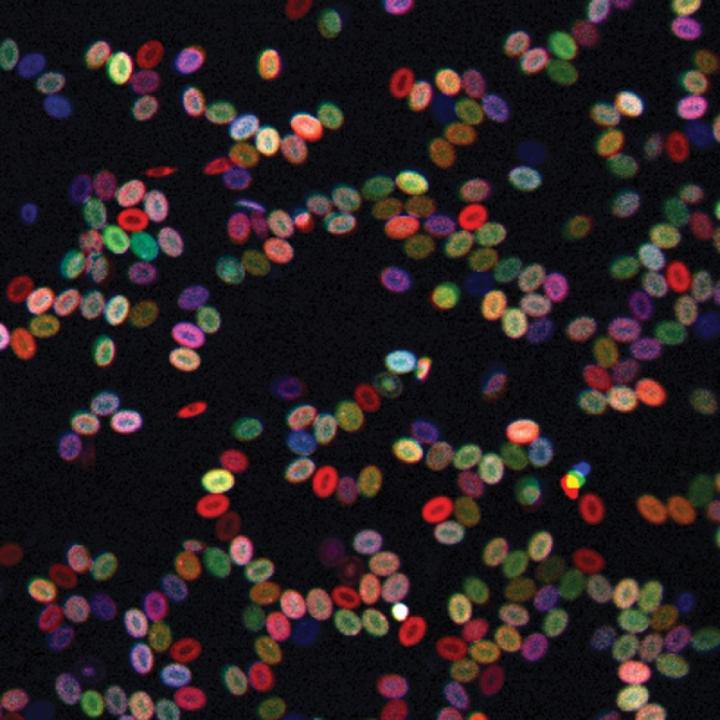


As of Beijing time The data is from a third-party organization and is only for reference.
For actual information, please refer to:www.eastmoney.com
Address: 20 Maguire Road, Suite 103, Lexington, MA 02421(America)
Tel: +1(626)986-9880
Address: Allia Future Business Centre Kings Hedges Road Cambridge CB4 2HY, UK
Tel: 0044 7790 816 954
Email: marketing@medicilon.com
Address: No.585 Chuanda Road, Pudong New Area, Shanghai (Headquarters)
Postcode: 201299
Tel: +86 (21) 5859-1500 (main line)
Fax: +86 (21) 5859-6369
© 2023 Shanghai Medicilon Inc. All rights reserved Shanghai ICP No.10216606-3
Shanghai Public Network Security File No. 31011502018888 | Website Map


Business Inquiry
Global:
Email:marketing@medicilon.com
+1(626)986-9880(U.S.)
0044 7790 816 954 (Europe)
China:
Email: marketing@medicilon.com.cn
Tel: +86 (21) 5859-1500



Scientists have been accused of cultivating a cold philosophy, one that would unweave a rainbow, but a group of scientists based at Boston Children’s Hospital would likely refute the charge. They are warming to a new kind of cellular barcoding, one that weaves a rainbow of its own. Its multicolored glow can illuminate stem cell development, with dimming and brightening hues corresponding to the decline and rise of distinct clonal subpopulations.

The barcoding system is being developed for hematopoietic stem cells (HSCs). It puts on color shows that could, if interpreted rightly, help scientists track and better understand blood disorders and cancers such as leukemia.
“There’s significant interest in determining how a stem cell clone expands, what makes one clone dominant, and why that predisposes you to cancer and blood disorders,” said Leonard Zon, M.D., director of the Stem Cell Research Program at Boston Children’s.
Dr. Zon and his colleagues developed a barcode tool for use in zebrafish. The scientists used the tool to track the blood stem cells the fish are born with, the clones (copies) these cells make of themselves, and the types of specialized blood cells they give rise to (red cells, white cells, and platelets).
Details of this work appeared November 21 in the journal Nature Cell Biology, in an article entitled, “Clonal Fate Mapping Quantifies the Number of Haematopoietic Stem Cells That Arise during Development.” The article describes how the scientists used a specially bred zebrafish called Zebrabow, which has multiple copies of genes for red–blue gene fluorescent protein scattered through its genome.
“Targeting creERT2 in developing cd41:eGFP+ HSCs enabled long-term assessment of their blood contribution,” the article’s authors wrote. “We also applied the Brainbow-based multicolour Zebrabow system with drl:creERT2 that is active in early haematopoiesis to induce heritable colour barcoding unique to each HSC and its progeny.”
By activating certain enzymes, the scientists cut the red–blue–green assembly in different ways and in different amounts. This technique yields, in theory, about 80 different colors based on the cell’s overall proportions of each fluorescent protein—each color representing a different clone or variety of blood stem cell.
“Our findings reveal that approximately 21 HSC clones exist prior to HSC emergence and 30 clones are present during peak production from aortic endothelium,” the authors continued. “Our methods further reveal that stress haematopoiesis, including sublethal irradiation and transplantation, reduces clonal diversity.”
Other scientists have developed tracking systems based on genetic barcodes. But these systems require that cells be dissected. Accordingly, these systems cannot analyze living, circulating cell populations.
“Because our system is based on color, we don’t have to destroy the cells to analyze their clonality,” noted Jonathan Henninger, a Ph.D. candidate in Dr. Zon’s laboratory. “Rather, we can isolate the cells by color, with the help of computational tools, and then look at what genetic factors are involved in their expansion.”
A normal blood system tends to have a diversity of clonal stem cell types—all cells being genetically identical but with different epigenetic changes that affect gene expression. Being able to track how different clonal populations develop has many implications for medicine.
For example, leukemia and myelodysplastic disorders are thought to arise from a clone of an original stem cell that went amok and began replicating in great numbers. But until now, this sort of clonal expansion has been hard to analyze, since no one knew how many blood stem cells exist at the outset. Based on the zebrafish data, Henninger and Dr. Zon estimate that blood stem cells make up about 20% of all blood cell progenitors at the time they are formed.
That provides a starting point for exploring, for example, why and how a particular blood stem cell clone may begin to expand as people age, posing a risk for leukemia, or how cancer chemotherapy can sometimes transform tumor cells.
“Within a tumor, you can get clones of cells that become resistant to chemotherapy, and that’s what kills the person,” Dr. Zon explained. “The questions are, ‘what makes a clone take off and start to behave differently than the rest? How is clonal diversity regulated?'”
Similarly, the knowledge could also help improve bone marrow transplant for a variety of childhood and adult disorders. “When you do a bone marrow transplant, only certain clones of stem cells take,” Dr. Zon pointed out. “This is important because these clones are driving development of an entire blood system, based on a finite number of cells.”
To test this out, the team irradiated the Zebrabow fish, damaging their blood cells, and then watched as their blood systems recovered, using their color coding system. “We saw that a smaller number of clones were dominant,” Dr. Zon stated. “This suggests there are some ‘good’ cells that are help people regenerate a healthy blood system.”
Dr. Zon and his team are now rushing to put genes that are mutated in humans with clonal expansion, and that predispose to leukemia, into the Zebrabow fish. Dr. Zon hopes the experiments will reveal how the dominant clones expand, and ultimately become cancerous.
 Relevant
news
Relevant
news